Thuja Holmstrup is one of the most popular decorative evergreen plants with a beautiful conical frame of the crown. Such popularity is explained by the versatility of the perennial: a slowly growing dwarf variety of the Tui is able to maintain the green painting of the needles throughout the year, the plant practically does not need trimming, perfectly tolerates winter and quickly adapts in a new place.
Unpretentious and hardy thuja Western Holmstrup, no doubt, the favorite of many gardeners and landscape designers. Perennial culture can grow in one place to 200 years, while it looks spectacular and bright. From the trees of this variety of Tui often form living hedges, they decorate the gardens, parks and household plots. How to grow thuy holmstrup on its own site - read in this selection of material.
Tuya Western, Plate Features
- Evergreen coniferous western is often referred to as another beautiful name - "vitality". The name "Thuja" is translated as "anonymous" and is explained by the characteristic pleasant smell of wood coniferous perennial culture used in ancient times in rituals of sacrifice.
- This genus of plants relates to the family of cypress and is a leader in use in decorative gardening and landscape design. Such popularity is explained by the huge variety of types and varieties of the Tui, with a different form of the crown, the colorful and structure of the needles, as well as due to durability, stability stress and the winter-hardiness of the plant.
- The first botany describing the Western Tui tree was the famous naturalist Karl Linney. In Europe, they took in 1540 from North America, which is the birthplace of culture.
- Tui Western is a slowly growing tree, reaching no more than 30-35 meters in an adult. The average plant parameters are about 12-20 meters. These indicators can change dramatically depending on the Tui variety.
- The most attractive part of the conifer is its evergreen crown pyramidal or egg-shaped.
- The needles on the thui branches are soft and small, juicy green, and only in winter the painting of the needles changes on brownish - brown. The needles are updated every 2-3 years, while it falls with merges with small shoots. Such a phenomenon is called "Vetavocale" and passes it gradually and almost imperceptibly.
- Young tree bark smooth, brown color. With age, the color of the bark becomes joy-brown shades and the longitudinal "age" cracks appear on it.
- Flowers are not decorative - the top, single. Brown cones of Tui small (about 1 cm) and rounded, contain two winged seeds.
- All forms, hybrids and varieties of Tui Western divide, depending on their size, on 5 groups: full-resistant (annual increase of more than 30 cm), the average (growth of 15-30 cm), dwarf (growth per year 8-15 cm), miniature (3-8 cm), microscopic (increase of less than 1-3 cm).
- Tuya Western, Variety Holmstrup, is considered one of the most common decorative hybrids of this kind of plants. The tree refers to the dwarf group of the Western Tui, with an annual increase of no more than 12-15 cm.
Tuya Holmstrup, description of the variety
- Thuja Holmstrup, evergreen dwarf tree, reaches no more than 3-4 meters, and in diameter - about 1-1.2 meters and refers to plants with low growth rate. So, to reach 1.5-2 m in height and 50-60 cm in diameter, the perennial will be required at least 10 years.
- Croon tree has a correct and uniform cone shape, high density. Moreover, the plant is capable of even without forming trimming for a long time to preserve the natural narrow-shaped form of Gabitus.
- The shoots are strong, flattened and compact, thick are located all over the diameter of the crown, which provides decorative attractive crown density. The terminal sprigs of the car are distinguished by a vertical location.
- The scaly soft needles are dark green, mostly saves this color and in winter. The root system is superficial, compact.
- Variety "Holmstrup" is considered an unpretentious and hardy plant that has high frost resistance and easily experiences minus temperature to -35 0WITH.
- Thuja Western Holmstrup grows without problems in urban environments, near industrial enterprises and roads.
- The lowered grade requires a minimum of landing area and does not cover the shadow of nearby plants.
- In addition, Tuya Western Holmstrup is distinguished by durability and can grow in one place to 200-tons.
- High vitality of a variety in combination with an attractive appearance of a plant, both student in winter and hot summer, make culture by the leader among many other ornamental plants.
Tuya Holmstrup, reviews
According to the reviews of many owners of Tui Holmstrup, the plant has proven itself from the best side.
A slow-growing, compact and very beautiful evergreen tree that does not lose its attractiveness even in winter, Thuja Holmstrup, besides, absolutely not demanding in care and does not need special attention.
The plant easily tolerates periods of long drought, severe frosts, does not require special forming trimming and shelter for the winter.
Naturally, such characteristics cannot not be interested in gardeners and landscape designers. Therefore, for many years, Western Tui Holmstrup has been leading a leading position in the list of the most decorative plants.
Tuya Holmstrup, where to buy
You can buy thuy holmstrup in almost any horticultural store or vegetable nursery.
It is best to acquire seedlings of their climatic zone, adapted and adapted to specific climatic conditions.
It is recommended to buy car saplings with a closed root system, in a plastic container containing a prolonged action fertilizer. In addition, the container seedling transplant procedure is considered little traumatic and guarantees almost 100% survival rate. Saplings with a closed root system can be planted almost at any time of the year, from spring to autumn, even in the hottest days of summer.
Before buying an evergreen plant, it should be carefully examined by the car's seedling so that it meets the basic requirements:
- Branches and needles should have a natural (green), healthy color and being elastic (not sluggish) to the touch;
- The needles should not crumble while touching the branches, even if it is natural, green;
- In the case of an open root system, roots must be integer and healthy, without damage and rot.
Tui seedlings with yellowed and sluggish mustache, signs of pests or fungal diseases, not worth buying with cutting or sticking out of the container with bare roots, since such a plant is likely to do not fit after landing.
Tuya Holmstrup, agricultural landing
Saplings of the Tui can be planted in open ground at different ages. Naturally, in this case there are "pros" and "minuses". The older the tree planted in the ground - the faster it will reach the size of an adult plant. At the same time, the landing of largest gardens is far from every kind of gardener, besides, large seedlings are worse than rooted and adapt in a new place.
As for the landing period, most often the seedlings are planted in the spring, during the period of established warm weather. You can plant the young plant of the Tui and in the fall, but with the condition of compulsory shelter for the winter.
Consider the key features and conditions for planting the saplings of Tui Holmstrup.
Terms of landing Tui Holmstrup
- For the light-headed Tui Western Holmstrup, a sunny, open, but, at the same time, protected from drafts and gusty winds, a plot.
- It is also allowed to landing the thuja in a light half.
- If you put a perennial conifer in the shade, the plant will lose its decorative look: the crown will not be dense, sparse and loose, the shape of the crown will also lose the correct outlines of the cone, and the needle will be pale and painful. In this state, Tuya loses its protective properties and becomes susceptible to the damage to various diseases or the attack of pests.
- Often, it is planted as a living hedge, then the trees are best placed in a deaf wall that prevents the ingress of sunlight, but along, for example, the grids "Rabitsy".
- The best soil for the Tui is a moistened loose fertile soil.
- A perennially develops in a drained ground, where moisture is not stored.
- Elderly soils or compacted soils are perfectly suitable, mixed with sand and peat.
- Dense clay soil requires adding peat and sand (in equal parts), sandy soil must be "diluted" peat and turf.
- If the soil substrate is too dense and lowered, the roots of the Tui will begin to "suffer" from the lack of oxygen, nutrient elements and the stagnation of moisture, which is fraught with the reinforcement of the root system.
- For the same reason, areas with close occurrence of groundwater necessarily drain.
- As for the optimal level of acidity, pH for Tui Western should be 4.5-6 units.
Technology landing Tui Holmstrup
- The size of the landing pits depend on the value of the car's seedling and, accordingly, the parameters of its root system. Usually, it is enough to dig a hole by 60-80 cm, both in depth and width.
- At the bottom of the pit should be placed about 20 cm of drainage material: rubble, broken brick, etc. The presence of drainage is a prerequisite in the case of close grounding of groundwater or too compacted soil. With a marshy soil, a capital drainage layer is used made of pipes.
- The composition of the soil substrate for landing Tui includes: sand, peat and leafy ground in a 1: 1: 2 ratio.
- Improve the growth and stimulate the development of a seedling will help enter nitrogen-phosphoric fertilizers to the landing.
- The easiest way to plant a car of the Tui with a closed root system, when the roots are practically not injured, which means they are quickly rooted in a new place. To do this, the young car of the thuu is rich in water, stretch out of the container (completely retaining the earthen com) and placed in the pit, gradually sprinkled and sealing ground around the seedling. In addition, seedlings in containers, as a rule, already contain a set of necessary fertilizers of prolonged action and in additional feeders during the year (including during the landing) do not need.
- In the case of landing the car's seedling with an open root system, it is necessary to place a village in the center of the landing pit (on the pre-prepared elevation of the soil), to straighten the roots and flood with a soil substrate.
- When landing, the root neck must be at the level of the soil, fall asleep it is not worth it. After landing, the car's sapling holmstrup is watered and mulched.
- The distance between the saplings of the dwarf teui largely depends on the design plan for the design of the garden area or the park area. If a dense ordinary landing is assumed to form a living hedge, the car's saplings are planted at a distance of about half a meter from each other.
- After planting a seedling of Tui, it is necessary to make a small deepening with sides around his barrel (5 cm high) - so-called. "Saucer" so that during watering water did not spread, and remained in the area of \u200b\u200bthe rolling circle. If the thua was planted on the slope, the same "saucer" is made, but with higher sides (about 10 cm).
Tuya Holmstrup, Care Rules
After landing, Tuya Holmstrup needs conventional agrotechnical events: watering, loosening, weeding, feeding and pruning.
Consider the basic rules for the care of the Tuya, providing the plant optimal growth and development.
Watering, loosening and mulching Tui Holmstrup
- Tui Western Holmstrup refers to drought-resistant plants, but too often experience such conifers should not be. With a stable disadvantage of the moisture of the Tui radiate, losing decorativeness and may die.
- Especially important is regular and abundant watering Tui in the first few months after landing. For this, the sapling is watered 1-2 times a week 10 liters of water and conduct periodic sprinkling crown. In a long arid period, the tree watered more often and more: 2-3 times a week 15-20 liters of water.
- Croon Plants evaporates a large amount of moisture, so perfectly responds to regular sprinkle. An adult conifer will be enough 1-2 such a procedure per week. Water flushes dust from the plants of the plants and moisturizes the air, which favorably affects the development of perennial. The only exception when you should not carry out this procedure - infection of culture with fungal infection. For the period of treatment, it is enough to carry out the usual watering of the tree.
- Considering the surface running of the roots of the Tui, loosening and taking the perennials is carried out carefully and shallow (not deeper 10 cm).
- To avoid constant loosening of the soil after each irrigation, the romance circle is better to immediately meditate. The mulch uses sawdust, beveled grass, peat or wood chip.
Making fertilizers and feeding Tui Holmstrup
- If the mineral fertilizer was added at the time of landing in the ground (a detailed description in the section "Agrotechnik landing Tui Holmstrup"), the first two years to make additional feeding should not.
- Pretchets for the Tui are brought in spring (from April to May). For this, any universal mineral complexes for conifers are used (for example, Kemira-Universal, Nitroammofoska, etc.) at the rate of about 50-60 g of nutrients per 1 m 2 Plot.
Trim Tui Holmstrup
- As such an annual forming trimming, Colon's Tui Holmstrup does not require. Optionally, you can independently carry out the molding of the crown, removing, for example, the upper branches and getting a truncated cone of the crown.
- It is enough, annually, in the spring, to carry out sanitary trimming of dry, damaged or sick shoots.
- The haircut of the Tui in the format of "Live hedge" is carried out by no more than 1 \\ 3 part of the length of her shoots.
Fighting diseases and pests Tui Holmstrup
- Thuja Holmstrup may be attacked by pests such as: Turning Till and False Shield. These insects parasitize on the needles, after which it begins to yellow and fall. Insecticidal preparations are used for the extermination of pests, which are carried out twofold trees with an interval of 7-10 days.
- The root system of the Tui tree can suffer from such a pest, like a larva of the May beetle - Khrushche. So, one larva in one day can completely destroy the root system of a young seedling, after which the plant dies. Particularly often Khrushchi are found on fertile, rich in humidification of garden soils. To combat pests, watering the plant with a solution of chemical preparations based on such a active substance as imidaclopride.
- With incorrect irrigation (both excessive and insufficient), the Tui tree may be affected by fungal diseases that are manifested in the drying of the shoots of the plant. At the same time, the tree loses attractive decorativeness and needs regulated stable watering and processing with copper-containing drugs. Such processing is carried out several times, with an interval of 2 weeks before complete "recovery". From a prophylactic point of view, they are additionally sprayed in addition, in spring and autumn.
Preparation for Winter Tui Holmstrup
- Adult strengthened Tui trees do not need shelter for the winter, they are distinguished by high winter hardiness (zone of frost resistance 3-4) and not afraid of even the strongest frosts (up to -35 0WITH).
- As for young seedlings, in the first year after landing, the trees "insulate" for the winter by any underfloor material (agrovolok, loose burlap). The rolling circle is mounted with a sweetheart, which, besides, will be a reliable protection against field mice.
- In the spring, after melting snow, the shelter is removed. The procedure is best carried out in cloudy weather.
- It is especially important to protect young boys from spring sun burns. For this purpose, the crown of trees are covered with a sweetheart or kraft paper.
The reproduction of Tui Holmstrup
Tuya Holmstrup easily multiplies at home. The simplest and affordable method of reproduction is the sealing of the plant. The seed method of reproduction is also sometimes used by gardeners, but it is important to remember that the Tui's varietal signs are most likely not saved.
Breeding Tui Holmstrup with cuttings
- The drawing is carried out in early spring, before swelling the kidneys or late autumn, before the onset of frosts. It is best to cut the top of the Tui's upper side shoots.
- Cutting is important to cut (sharp knife) with a small part of the tree trunk, so-called. "Heel". The length of the full cutter is about 10-15 cm. The lower twigs at the cutting is removed.
- Then, the bundles of the thui are withstanding the night in the heteroacexin solution (Kornin), after which it is planted in the prepared soil substrate.
- To do this, a mixture of peat, sand and a delicate land taken in equal parts is suitable. Mixed ingredients should be thermal processing (sterilization) in the oven or microwave.
- Lined in a duffle of stalks (at a depth of 5-7 cm, under the tilt of 20-30 0) It is moisturized and covered with glass (cropped plastic bottle) or film, creating a mini-greenhouse. Greenhouse microclimate (with air temperature around 22-24 0With and high humidity) allow cuttings faster and easier to root. The soil must be constantly moisturized, but without water stagnation. The place where the cuttings will be rooted, should be bright, it is possible to illuminate the lamp to 12-12 hours per day.
- Some gardeners practice germs in plastic bags with "clasp". Such shoots form roots, approximately within a month, after which they are already planted into the container.
Reproduction of Tui Holmstrup Seeds
- You can breed the Tui and with the help of seeds. Naturally, a seed method of reproduction is a longer and time-consuming process.
- In order to get seeds, in the fall, overlapping the rided cones of the Tui and lay them out for drying in a dry and cool place.
- When the bumps are dried, and scales will open, you can pour seeds.
- The seeds are then placed in tissue bags, where they store them until winter. It is not worth storing the seed material longer, as he quickly loses his germination.
- In winter, when snow falls, the bags with seeds are buried in the snow until spring for hardening and natural stratification. You can simply put the seeds in the refrigerator with a temperature of about + 2-4 0WITH.
- In the spring, with the onset of heat, the seeds are sown into the grocery grocery (with an interval of 10-15 cm), pour and mulched peat. As a mulch, you can also use small sawdust.
- The depth of sealing small seeds in the soil is not more than 0.5 cm.
- At the first stage of the germination of seeds, the seedlings are slightly covered with direct sunlight, regularly pour and periodically fertilize with a organic (for example, a cowbling solution).
- In the 3-year-old seedlings, seedlings are picked, and in 5 years old - the car's seedlings are transplanted at a permanent place. Tui seedlings grow very slowly.
Using Tui Western Holmstrup
- Tuya Holmstrup is widely used in landscape design as a central single landing or group decorative plantings. Spectacular animals are decorated with urban parks and private household plots.
- The Tui Western Holmstrup grade is often used by landscape designers to create contrast compositions from plants of various architecture. The colonum shape of the Tui fits perfectly in the "pictures" of mixboraders and rocky gardens, solemn and official garden and park areas.
- Tyui holmstrup is planted both in open ground and in large decorative containers.
- This Tui variety is used by experienced gardeners as objects for topium haircuts. Of the neat low-speed Tui trees, unusually attractive cones, squares, pyramids and even balls are obtained.
- Evergreen Thuja perfectly cleans and ionizes the ambient air, which is very useful, especially in the context of the highly ridiculousness of cities.
- Soft, but durable and non-rotated, wood wood Western wood is used for the manufacture of furniture and drank. In Canada, "flavored brooms" are prepared from the thugs.
- The needle of the car is material for the preparation of essential oil, widely used in medicine and perfumery industry.
- Thuja also found its use in folk medicine. Infusions of the needles and the bark of the Tui are used as a coorative, laxative, diuretic agent, for the treatment of cough, colds, rheumatism, dental and headaches.
Thus, a highly decorative plant, a colonum-shaped tuya holmstrup is distinguished by a lot of advantages and privileges: a high level of frost-resistant and drought-resistant, increased resistance and durability, resistance to winter burnout (drilling) and endurance. This evergreen plant is an ideal option for the ratio of maximum aesthetic pleasure with minimal culture care. After all, this is one of the few varieties of the car that does not require haircuts, while preserving the correct geometric shape of the crown. Rail a perennial on his site can anyone, even a novice gardener.

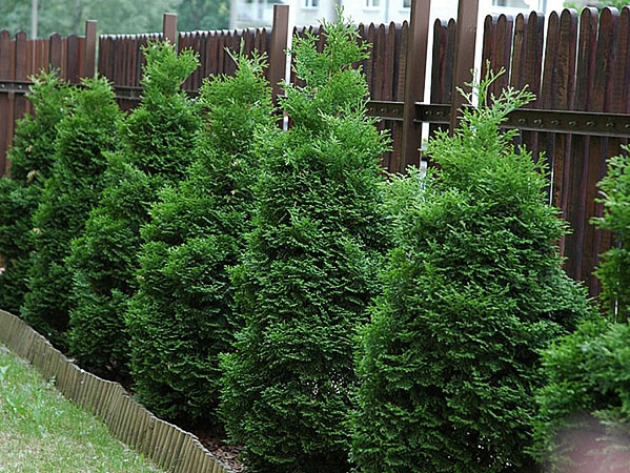
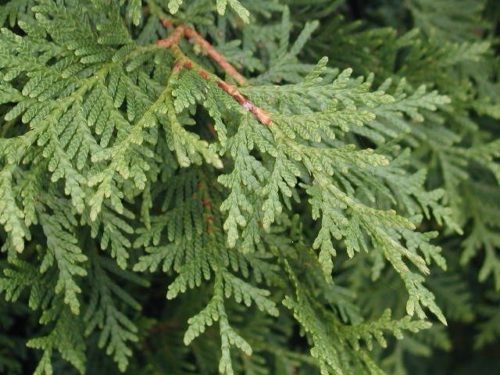
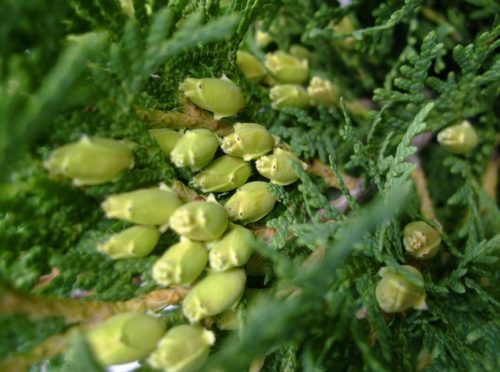
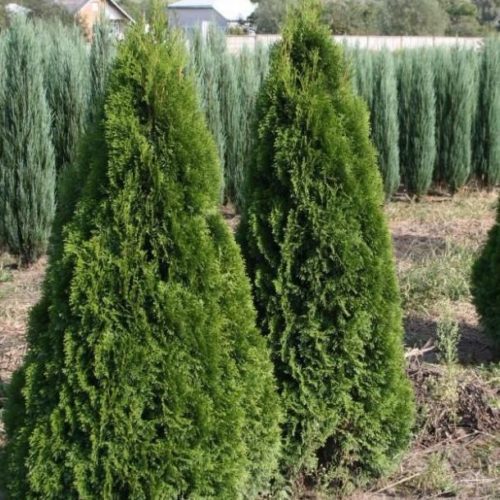
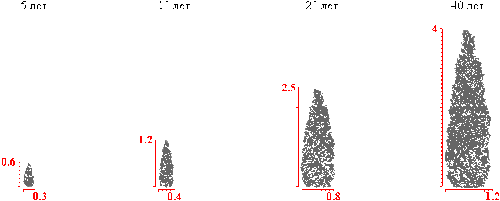

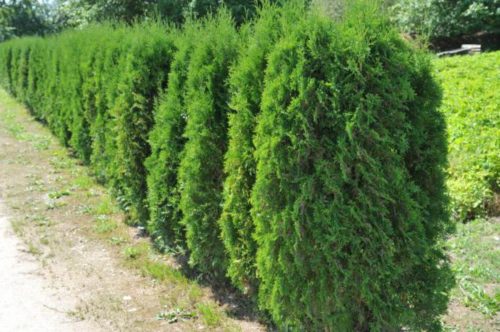
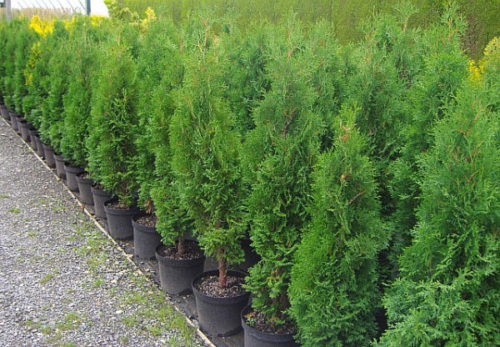

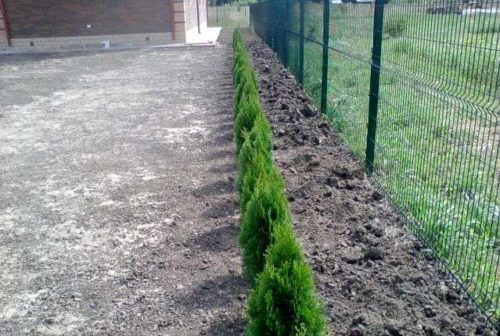
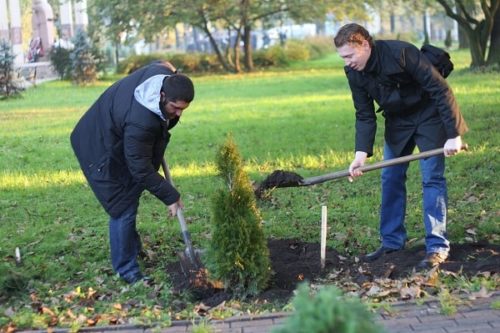


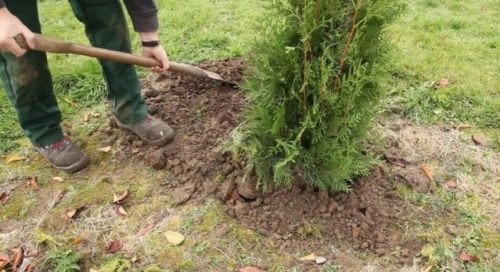
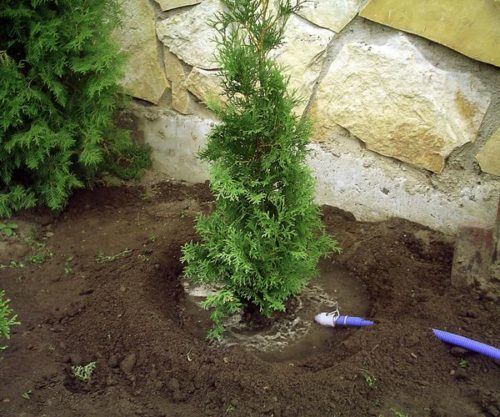
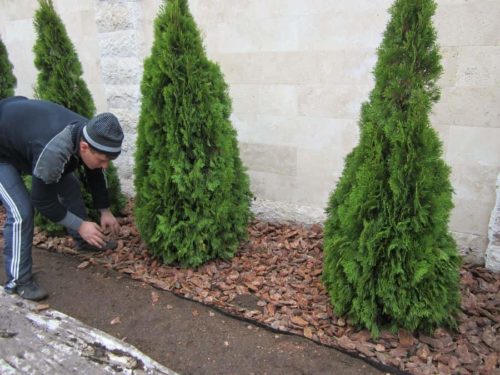

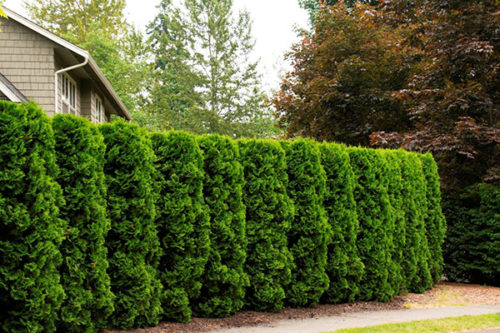
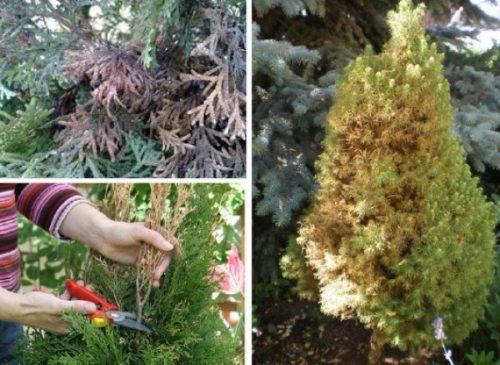
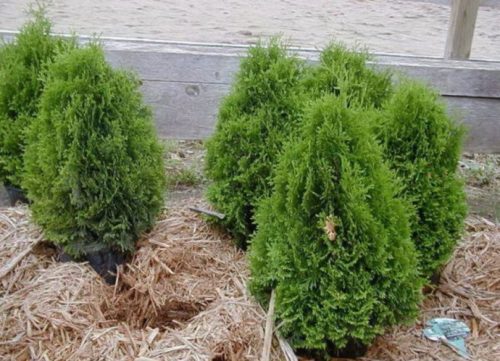
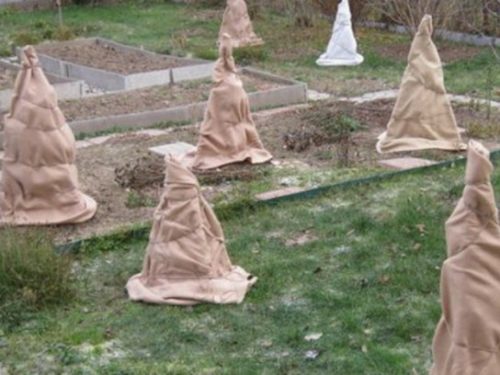
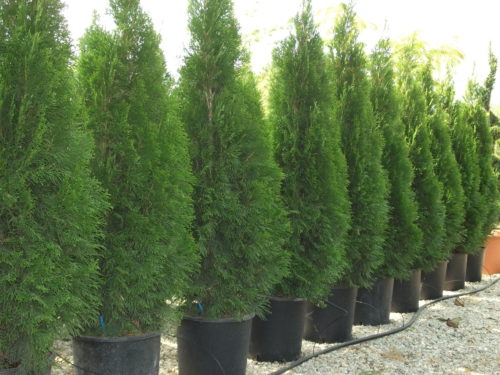

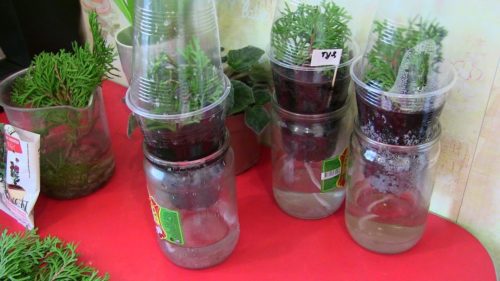



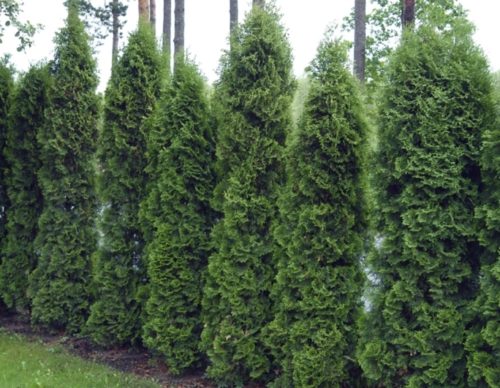
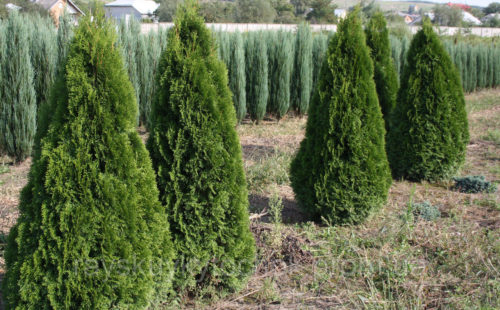













 Start a discussion ...
Start a discussion ...